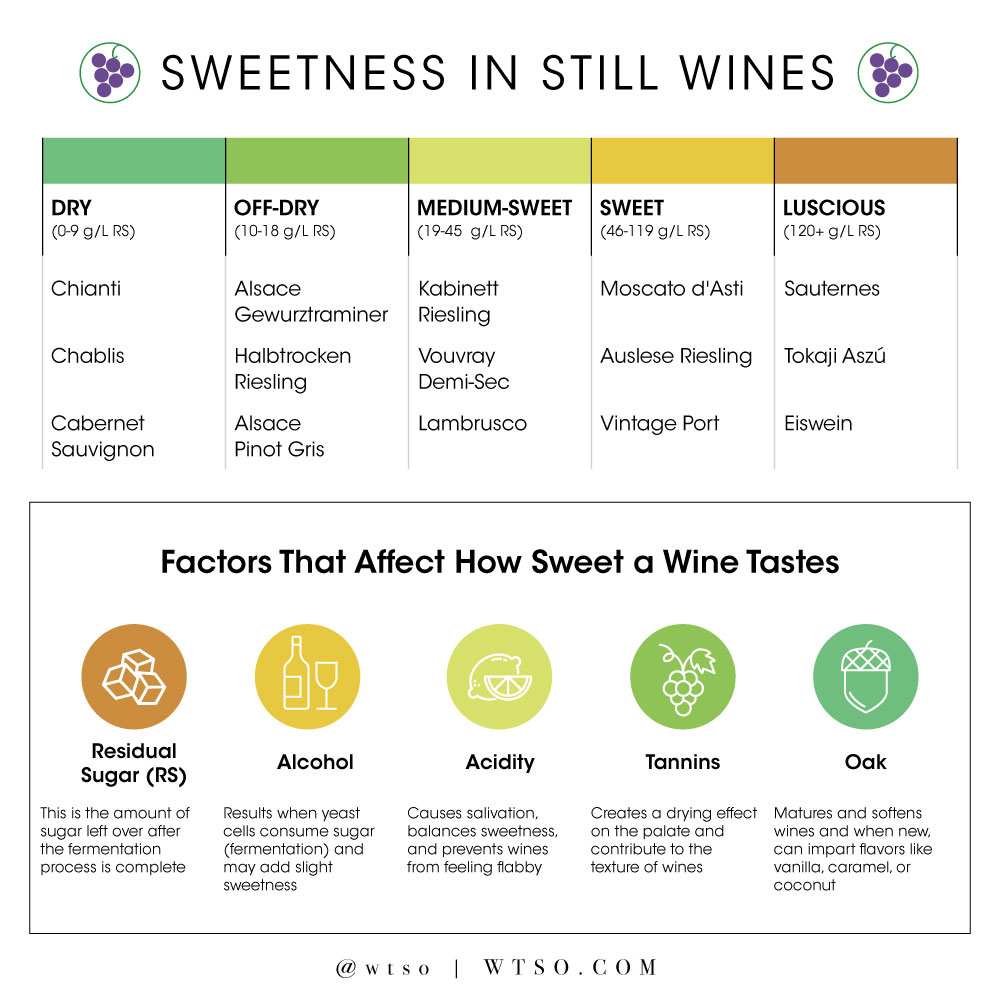With the vast array of wines available today, it’s not always easy to find the perfect bottle. If you’ve ever found yourself with a bottle of sweet wine that’s simply too sugary for your taste, don’t despair! Here’s a step-by-step guide on how to make sweet wine less sweet:

Image: www.wtso.com
Dilution: The Simplest Way to Sweet-Free Your Wine
One of the simplest ways to reduce the sweetness of your wine is to dilute it with water. This is a relatively simple process and can easily be done with any type of wine. However it is important to remember that dilution may alter the wine’s flavor and aroma by reducing the intensity of certain flavors and allowing others to become more pronounced.
Start by adding a small amount of water to your wine, then taste it. Continue adding small amounts until your wine reaches your desired sweetness level. If you’re not sure how much to add, start with a 1:1 ratio of wine to water. You may also try using sparkling water for a more bubbly result.
Adding Acid: Balancing Sweetness with Tartness
Acidity is one of the key components in wine, and it can help to balance the sweetness. If you find that your wine is too sweet, you can add a small amount of acidic beverage, such as lemon juice or vinegar. This will help to balance the flavor, making your wine more palatable.
There are other ways to achieve this balance as well. For instance, you may choose to decant your wine in order to introduce some oxidation and air into the mix, which will change its profile. You can also allow the wine to sit for a few days before using, which will allow its flavors to mellow with time.
Using Fining Agents: Refining Your Wine
Fining agents are a great way to reduce the sweetness of your wine without altering its flavor. These agents work by removing suspended solids from your wine, including particles that may be responsible for its sweetness. Some popular fining agents include bentonite clay, isinglass, and gelatin. While they are safe to ingest, always be sure to use these in moderation to avoid overfining.
To use a fining agent, simply add it to your wine and stir. Let the wine sit for several days, then filter it through a coffee filter or cheesecloth. Your wine will now be free of excess sweetness and other undesirable particles.

Image: www.wineswithattitude.co.uk
Tips and Expert Advice for Neutralizing Sweetness
In addition to the above-mentioned methods, here are some additional tips and expert advice for making your sweet wine less甜:
- Taste Your Wine Regularly: As you dilute or add other ingredients to your wine, make sure to taste it regularly and adjust the proportions as needed.
- Don’t Overdo It: It’s important to exercise caution when reducing the sweetness of your wine. You don’t want to make your wine too dry or tart.
- Experiment With Different Methods: The best way to find the perfect method is to experiment with different ones. This will help to ensure that you get your preferred level of sweetness (or lack thereof). This is where the fun part comes in, and you might discover new flavors you would never have stumbled upon before.
Frequently Asked Questions About Sweet Wine
- Q: What is considered a sweet level for wine?
A: Sweetness levels in wine are measured by the amount of residual sugar remaining after fermentation. Wines with more than 30g of residual sugar per liter are considered sweet. - Q: Can you reduce the sugar content in a fermented wine?
A: While the fermentation process turns grape sugars into alcohol and carbon dioxide, most wines will still retain some units of residual, natural sugar. However, it may be possible to reduce the perceived sweetness by adding bittering agents, acids, tannins and balancing the flavors. Keep in mind that the fermentation process cannot be reversed.
How To Make Sweet Wine Less Sweet
Conclusion
Making sweet wine less sweet is a simple and straightforward process that can be done at home with a few simple ingredients. By following the steps outlined in this guide, you can ensure that your wine is the perfect sweetness level for your taste. We hope you find this article useful. If you have any further questions or would like to know more, don’t hesitate to reach out. Cheers!






